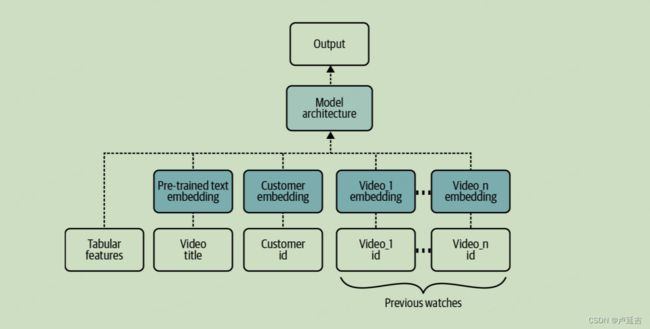- 前端性能优化之SSR优化
xiangzhihong8
前端前端
我们常说的SSR是指Server-SideRendering,即服务端渲染,属于首屏直出渲染的一种方案。SSR也是前端性能优化中最常用的技术方案了,能有效地缩短页面的可见时间,给用户带来很好的体验。SSR渲染方案一般来说,我们页面加载会分为好几个步骤:请求域名,服务器返回HTML资源。浏览器加载HTML片段,识别到有CSS/JavaScript资源时,获取资源并加载。现在大多数前端页面都是单页面应
- 【新能源集成热管理系统的开发与优化】
新能源汽车--三电老K
研发测试汽车学习方法
新能源集成热管理系统的开发与优化涉及多阶段的试验、标定和策略调整,需结合实验室仿真、环境仓测试及实车道路验证,以应对高低温、极端气候等复杂工况。以下是具体实施方法:一、环境仓试验室测试系统标定与基础验证模型搭建:通过AMESim等仿真工具建立机-电-热耦合模型,涵盖电池、电机、空调等子系统,分析高温工况下各部件能耗占比及整车续航表现。参数标定:在环境仓中模拟极端温度(如38℃高温或-30℃低温),
- C#基于MVC模式实现TCP三次握手,附带简易日志管理模块
风,停下
C#设计模式网络协议c#mvctcp/ip
C#基于MVC模式实现TCP三次握手1Model1.1ServerModel1.2ClientModel1.3配置参数模块1.4日志管理模块1.4.1数据结构1.4.1日志管理工具类1.4.1日志视图展示1.4.1.1UcLogManage.cs1.4.1.2UcLogManage.Designer.cs2视图(View)2.1ViewServer2.1.1ViewServer.cs2.1.1Vi
- c#:使用串口通讯实现数据的发送和接收
妮妮学代码
c#串口通讯c#开发语言
串口通讯(SerialCommunication)是一种常见的硬件设备与计算机之间的数据传输方式,广泛应用于工业控制、嵌入式系统、传感器数据采集等领域。本文将详细介绍如何使用C#实现基于串口通讯的数据发送和接收,并结合代码示例解析其实现过程。1.概述串口通讯的核心是System.IO.Ports.SerialPort类,它封装了串口操作的底层细节,提供了简单易用的接口。以下是串口通讯的基本流程:1
- C#:使用UDP协议实现数据的发送和接收
妮妮学代码
c#UDPc#udp
UDP(UserDatagramProtocol)是一种无连接的、轻量级的传输协议,适用于对实时性要求较高的应用场景,如视频流、在线游戏等。与TCP不同,UDP不保证数据的可靠传输,但其传输效率更高。本文将详细介绍如何使用C#实现基于UDP协议的数据发送和接收,并结合代码示例解析其实现过程。1.概述UDP通讯的核心是UdpClient类,它封装了UDP协议的底层操作,提供了简单易用的接口。以下是U
- JAVA泛型
TraceChen
JAVAjava
JAVA泛型Java泛型(generic)是在JDK1.5版本引用的一种新的特性,泛型提供编译时安全检查机制,该机制允许程序员在编译时检查非安全的类型。一、泛型本质泛型本质是数据化类型,即先给类型指定一个参数,然后使用时再指定参数具体的值,那么这个类型可以在使用时候决定,这种参数类型可以用在类、接口、方法中,分别被称为泛型类、泛型接口、泛型方法。 Listlist=newArrayListl
- Maven中dependency标签参数
lgily-1225
日常积累mavenjava后端
Maven中dependency标签参数如下:一、type有时候我们引入某一个依赖时,必须指定type,这是因为用于匹配dependency引用和dependencyManagement部分的最小信息集实际上是{groupId,artifactId,type,classifier}。在很多情况下,这些依赖关系将引用没有classifier的jar依赖。这允许我们将标识设置为{groupId,art
- 数学建模清风课程笔记——第二章 TOPSIS法
minpengyuanBITer
数学建模数学建模笔记
TOPSIS(TechniqueforOrderPreferencebySimilaritytoIdealSolution)可翻译为逼近理想解排序法,国内简称为优劣解距离法。TOPSIS法是一种常用的综合评价方法,其能充分利用原始数据的信息,其结果能够精确地反映各评价方案之间的差距。评价类问题1TOPSIS法TOPSIS法概念:TOPSIS法是一种常用的综合评价方法,能充分利用原始数据的信息,其结
- JDK8 Stream 数据流效率分析,Java开发你需要了解的那些事
气质大叔
程序员后端面试java
此外还有一系列特化流,如IntStream,LongStream,DoubleStream等),Java8引入的的Stream主要用于取代部分Collection的操作,每个流代表一个值序列,流提供一系列常用的聚集操作,可以便捷的在它上面进行各种运算。集合类库也提供了便捷的方式使我们可以以操作流的方式使用集合、数组以及其它数据结构;作为阅读福利,小编也整理了一些Java学习笔记(包含面试真题+脑图
- 「Python数据分析」Pandas基础,筛选数据利器:布尔索引
奕澄羽邦
python数据分析pandas
我们在处理数据的时候,数据筛选是一个重要的过程。利用布尔索引,我们可以选择需要的数据区间。布尔索引,是利用各种不等式,以及与或非操作,来对数据区间进行选择。在pandas中,与操作,对应的是&这个符号,表示选取两个数据集重合的部分。或操作,对应的是|这个符号,表示选择两个数据集中,只要在一个数据集中出现的部分。非操作,对应的是~这个符号,表示选取一个数据集中,相反的部分。我们下面通过具体的例子,来
- js 创建对象写法 ---追溯
狼魂豹速
javascript前端开发语言
复制重新生成importSqlParaDTOfrom‘./SqlParamDTO’;exportdefault{create(funcSysId,jsonPara){//实例私有状态(每次create()调用独立)conststate={funcSysId:String(funcSysId||‘’),//强制字符串类型sqlId:‘’,modelName:undefined,queryColumn
- STM32 SPI总线驱动CH376T实现U盘/TF卡读写全解析—SPI通信、命令集与文件操作(下) | 零基础入门STM32第七十五步
触角01010001
STM32入门教程(100步)stm32驱动开发单片机嵌入式硬件物联网
主题内容教学目的/扩展视频CH376芯片重点课程电路原理,跳线设置,切换U盘和TF卡。手册分析。驱动程序。调用常用函数。会调用现有函数操作U盘即可。师从洋桃电子,杜洋老师文章目录1.引言2.硬件连接3.驱动程序分析3.1SPI通信机制4.CH376命令集详解4.1常用命令表4.2命令使用示例5.初始化程序解析6.数据读写函数实现6.1写数据到文件6.2从文件读取数据7.应用示例:U盘状态检测8.扩
- 固态电池行业深度研究报告:技术变革与市场展望
萧十一郎@
知识科普大数据人工智能
目录一、引言1.1研究背景与目的1.2研究方法与数据来源二、固态电池概述2.1定义与分类2.1.1定义2.1.2分类2.2工作原理2.3发展历程三、固态电池技术优势与挑战3.1技术优势3.1.1高安全性3.1.2高能量密度3.1.3长循环寿命3.2技术挑战3.2.1离子电导率低3.2.2固-固界面问题3.2.3锂枝晶生长3.2.4成本高昂四、固态电池材料体系与技术路线4.1固态电解质材料4.1.1
- 【数学建模】灰色关联分析模型详解与应用
烟锁池塘柳0
数学建模数学建模算法
灰色关联分析模型详解与应用文章目录灰色关联分析模型详解与应用引言灰色系统理论简介灰色关联分析基本原理灰色关联分析计算步骤1.确定分析序列2.数据无量纲化处理3.计算关联系数4.计算关联度灰色关联分析应用实例实例:某企业生产效率影响因素分析灰色关联分析在各领域的应用灰色关联分析的Python实现灰色关联分析的局限性结论引言在数据分析领域,我们经常面临样本量少、信息不完全、数据不确定性高的情况。传统的
- 数据分析_python进行数据筛选1_行筛选
Monkey*王
python数据分析pandas
以titanic的训练数据为例进行展示,为了简化取前十行为例首先导入模块,导入数据importpandasaspdimportnumpyasnpdf=pd.read_csv(r"C:\Users\admin\Desktop\train.csv")df=df.head(10)df.index=['a','b','c','d','e','f','g','h','i','g']筛选单行1.利用df[行索
- 前端面经真题解析10-字节/抖音电商/前端/超详细记录
浪里个浪zxf
前端面试前端
文章目录1.自我介绍2.介绍下自己的项目3.看你项目里面用了axios,说下请求拦截和响应拦截怎么做?4.说下项目里面前后端交互过程及设计?5.怎么处理切换分页请求数据的,优化手段?6.说下你爬取别人网站数据的时候,别人如果设置了拦截,你的解决方案是?7.你说下http请求的refer字段?**Origin字段:****Referer字段:****Host字段****区别:**8.看你做了路由懒加
- 优化Redis AOF重写配置:解决AOF文件过大的终极指南
冯·诺依曼的
redis数据库缓存云计算
核心配置参数解析与优化以下配置参数位于Redis配置文件/etc/redis.conf中,用于控制AOF持久化与重写行为。通过合理调整这些参数,可显著减少AOF文件体积并提升性能。1.appendfsync:AOF文件同步策略默认值:everysec修改建议:appendfsyncno作用:控制AOF日志同步到磁盘的频率。everysec(默认):每秒同步一次,平衡性能与数据安全。no:由操作系统
- 尚硅谷电商数仓6.0,hive on spark,spark启动不了
新时代赚钱战士
hivesparkhadoop
在datagrip执行分区插入语句时报错[42000][40000]Errorwhilecompilingstatement:FAILED:SemanticExceptionFailedtogetasparksession:org.apache.hadoop.hive.ql.metadata.HiveException:FailedtocreateSparkclientforSparksessio
- Vue.js 中常见的以 $ 开头的实例属性和方法
遇见~未来
Vue.jsvue.jsjavascript前端
1.$data作用:包含Vue实例或组件的响应式数据对象。用法:通过this.$data访问组件的data数据。示例:exportdefault{data(){return{message:'Hello,Vue!'};},created(){console.log(this.$data.message);//输出:Hello,Vue!}};2.$el作用:指向Vue实例或组件的根DOM元素。用法:
- Java泛型
lgily-1225
日常积累java开发语言后端
Java泛型是Java5引入的一项重要特性,旨在增强类型安全、减少代码冗余,并支持更灵活的代码设计。以下是对泛型的详细介绍及使用指南:一、泛型核心概念泛型允许在类、接口、方法中使用类型参数(如),使得代码可以处理多种数据类型,而无需重复编写逻辑。解决的问题类型安全:避免运行时ClassCastException。消除强制类型转换:编译器自动处理类型转换。代码复用:同一逻辑可处理不同类型的数据。二、
- MyBatis-Plus中使用@Transactional注解的5大陷阱,你中招了吗?
墨瑾轩
Java乐园mybatis
关注墨瑾轩,带你探索编程的奥秘!超萌技术攻略,轻松晋级编程高手技术宝库已备好,就等你来挖掘订阅墨瑾轩,智趣学习不孤单即刻启航,编程之旅更有趣MyBatis-Plus中使用@Transactional注解的5大陷阱,你中招了吗?在使用MyBatis-Plus进行持久层开发时,事务控制是确保数据一致性的重要手段。然而,在实践中,不当的使用@Transactional注解可能导致各种意想不到的问题。本文
- 实现高德地图自定义点标记跳动,点标记随缩放大小显示和隐藏
时光请留微笑
javascript前端vue.js
高德地图的自定义标记(Marker)添加一个循环动画效果,比如让图标上下跳动,你可以利用CSS动画或JavaScript动画库(如GSAP)。使用GSAP来创建动画,下面我将展示两种GSAP和CSS类来为Marker的内容添加循环动画。方法一:通过CSS动画实现图标上下跳动首先自定义点标记,在点标记显示内容content中自定义一个图标,这里我用的是element中的图标,给标签一个类名,如i-i
- 学习 积累 规划 一个DBA的成功之路
小藤椅
Oracle基础知识数据库db2sqlserverinformixibmoracle
一个DBA的数据库学习经验:选定发展方向1999年,我在开始读研时就给自己确定了以后的发展方向。当时有两个方向:网络,数据库技术。因为在2000年之时,网络大热,市场上拥有CCNP、CCIE证书的人特别牛。所以我当时也考下了CCNP证书,但后来发现网络方向涉及很多硬件层面的东西,这些都对厂商的依赖性太强,个人发挥空间不大。而我喜欢钻研,所以慢慢开始转向专攻数据库技术。在认准数据库这个方向后,我开始
- 3.16RabbitMQ入门实战
plusk
rabbitmq分布式
RabbitMQ基本概念:RabbitMQ是遵循AMQP(AdvancedMessageQueueProtocol)协议,即高级消息队列协议实现的,AMQP协议是一个标准协议,如果想写一个原生的消息队列的话也可以遵守该协议去开发。结合AMQP协议的模型图我们可以去理解RabbitMQ的运行机制:生产者(Publisher,图中最左边):发送消息到交换机交换机(Exchange):接收消息,并决定转
- Android 扫码 - 集成 zxing-android-embedded
我命由我12345
Android-简化库编程androidjava-eejava安卓android-studioandroidstudioandroidjetpack
一、zxing-android-embedded1、ZXing概述ZXing是谷歌开源的让开发者更方便使用摄像头的库,而常用的扫码功能就是其中之一第三方ZXing库zxing-android-embedded,抽取其中的扫码功能单独使用2、基本使用(1)依赖与权限配置在项目级build.gradle中配置相关依赖implementation'com.journeyapps:zxing-androi
- DataEase二开记录--踩坑和详细步骤(一)
风_间
DataEase数据库mysqljava
最近在看DataEase,发现挺好用的,推荐使用。用的过程中萌生了二开的想法,于是自己玩了玩,并做了一些记录。开发环境问题下载源码,选稳定版本的,本案例是1.17.0版本。下载地址开源社区-FIT2CLOUD飞致云数据库配置数据库初始化:DataEase使用MySQL数据库,推荐使用MySQL5.7版本。同时DataEase对数据库部分配置项有要求,请参考下附的数据库配置,修改开发环境中的数据库配
- 《魔兽争霸-黑潮》游戏秘籍
小魚資源大雜燴
游戏
DECKMEOUT部队升级EVERYLITTLETHINGSHEDOES魔法升级GLITTERINGPRIZES增加黄金、木材、油量ITISAGOODDAYTODIE无敌MAKEITSO加快建筑、训练、升级的速度ONSCREEN地图全开,包括所有活动SHOWPATH地图全开,不包括所有活动HATCHET加快砍树速度SPYCOB增加油量5000单位TIGERLILY开启跳关模式,再输入“HUMANx
- 【Dive Into Stable Diffusion v3.5】1:开源项目正式发布——深入探索SDv3.5模型全参/LoRA/RLHF训练
Donvink
大模型#AIGCstablediffusionAIGC人工智能机器学习深度学习
目录1引言2项目简介3快速上手3.1下载代码3.2环境配置3.3项目结构3.4下载模型与数据集3.5运行指令3.6核心参数说明3.6.1通用参数3.6.2优化器/学习率3.6.3数据相关4结语1引言在人工智能和机器学习领域,生成模型的应用越来越广泛。StableDiffusion作为其中的佼佼者,因其强大的图像生成能力而备受关注。今天,我的开源项目DiveIntoStableDiffusionv3
- 设计模式-责任链模式
小九没绝活
设计模式设计模式责任链模式java
核心思想责任链模式通过将多个处理对象(Handler)连接成一条链,允许请求在链上传递,直到被某个对象处理或链终止。核心目标是解耦请求发送者与接收者,让多个对象都有机会处理请求,增强系统的灵活性和可扩展性。模式结构角色职责抽象处理者定义处理请求的接口(Handler),通常包含设置下一个处理者的方法具体处理者实现抽象处理者接口,判断是否能处理请求,否则传递给下一个处理者客户端创建处理链,并向链的头
- 效果媲美GPT4V的多模态大型语言模型MiniCPM-V-2_6详细介绍
我就是全世界
语言模型人工智能自然语言处理
MiniCPM-V-2.6概述1.1模型背景MiniCPM-V-2.6是由nuoan开发的一款达到GPT-4V级别的多模态大型语言模型(MLLM)。该模型专为手机上的单图像、多图像和视频处理设计,旨在提供高效、准确的多模态内容理解与生成能力。随着移动设备的普及和计算能力的提升,用户对于在移动端进行复杂图像和视频处理的需求日益增长。MiniCPM-V-2.6的推出,正是为了满足这一需求,提供了一种在
- 怎么样才能成为专业的程序员?
cocos2d-x小菜
编程PHP
如何要想成为一名专业的程序员?仅仅会写代码是不够的。从团队合作去解决问题到版本控制,你还得具备其他关键技能的工具包。当我们询问相关的专业开发人员,那些必备的关键技能都是什么的时候,下面是我们了解到的情况。
关于如何学习代码,各种声音很多,然后很多人就被误导为成为专业开发人员懂得一门编程语言就够了?!呵呵,就像其他工作一样,光会一个技能那是远远不够的。如果你想要成为
- java web开发 高并发处理
BreakingBad
javaWeb并发开发处理高
java处理高并发高负载类网站中数据库的设计方法(java教程,java处理大量数据,java高负载数据) 一:高并发高负载类网站关注点之数据库 没错,首先是数据库,这是大多数应用所面临的首个SPOF。尤其是Web2.0的应用,数据库的响应是首先要解决的。 一般来说MySQL是最常用的,可能最初是一个mysql主机,当数据增加到100万以上,那么,MySQL的效能急剧下降。常用的优化措施是M-S(
- mysql批量更新
ekian
mysql
mysql更新优化:
一版的更新的话都是采用update set的方式,但是如果需要批量更新的话,只能for循环的执行更新。或者采用executeBatch的方式,执行更新。无论哪种方式,性能都不见得多好。
三千多条的更新,需要3分多钟。
查询了批量更新的优化,有说replace into的方式,即:
replace into tableName(id,status) values
- 微软BI(3)
18289753290
微软BI SSIS
1)
Q:该列违反了完整性约束错误;已获得 OLE DB 记录。源:“Microsoft SQL Server Native Client 11.0” Hresult: 0x80004005 说明:“不能将值 NULL 插入列 'FZCHID',表 'JRB_EnterpriseCredit.dbo.QYFZCH';列不允许有 Null 值。INSERT 失败。”。
A:一般这类问题的存在是
- Java中的List
g21121
java
List是一个有序的 collection(也称为序列)。此接口的用户可以对列表中每个元素的插入位置进行精确地控制。用户可以根据元素的整数索引(在列表中的位置)访问元素,并搜索列表中的元素。
与 set 不同,列表通常允许重复
- 读书笔记
永夜-极光
读书笔记
1. K是一家加工厂,需要采购原材料,有A,B,C,D 4家供应商,其中A给出的价格最低,性价比最高,那么假如你是这家企业的采购经理,你会如何决策?
传统决策: A:100%订单 B,C,D:0%
&nbs
- centos 安装 Codeblocks
随便小屋
codeblocks
1.安装gcc,需要c和c++两部分,默认安装下,CentOS不安装编译器的,在终端输入以下命令即可yum install gccyum install gcc-c++
2.安装gtk2-devel,因为默认已经安装了正式产品需要的支持库,但是没有安装开发所需要的文档.yum install gtk2*
3. 安装wxGTK
yum search w
- 23种设计模式的形象比喻
aijuans
设计模式
1、ABSTRACT FACTORY—追MM少不了请吃饭了,麦当劳的鸡翅和肯德基的鸡翅都是MM爱吃的东西,虽然口味有所不同,但不管你带MM去麦当劳或肯德基,只管向服务员说“来四个鸡翅”就行了。麦当劳和肯德基就是生产鸡翅的Factory 工厂模式:客户类和工厂类分开。消费者任何时候需要某种产品,只需向工厂请求即可。消费者无须修改就可以接纳新产品。缺点是当产品修改时,工厂类也要做相应的修改。如:
- 开发管理 CheckLists
aoyouzi
开发管理 CheckLists
开发管理 CheckLists(23) -使项目组度过完整的生命周期
开发管理 CheckLists(22) -组织项目资源
开发管理 CheckLists(21) -控制项目的范围开发管理 CheckLists(20) -项目利益相关者责任开发管理 CheckLists(19) -选择合适的团队成员开发管理 CheckLists(18) -敏捷开发 Scrum Master 工作开发管理 C
- js实现切换
百合不是茶
JavaScript栏目切换
js主要功能之一就是实现页面的特效,窗体的切换可以减少页面的大小,被门户网站大量应用思路:
1,先将要显示的设置为display:bisible 否则设为none
2,设置栏目的id ,js获取栏目的id,如果id为Null就设置为显示
3,判断js获取的id名字;再设置是否显示
代码实现:
html代码:
<di
- 周鸿祎在360新员工入职培训上的讲话
bijian1013
感悟项目管理人生职场
这篇文章也是最近偶尔看到的,考虑到原博客发布者可能将其删除等原因,也更方便个人查找,特将原文拷贝再发布的。“学东西是为自己的,不要整天以混的姿态来跟公司博弈,就算是混,我觉得你要是能在混的时间里,收获一些别的有利于人生发展的东西,也是不错的,看你怎么把握了”,看了之后,对这句话记忆犹新。 &
- 前端Web开发的页面效果
Bill_chen
htmlWebMicrosoft
1.IE6下png图片的透明显示:
<img src="图片地址" border="0" style="Filter.Alpha(Opacity)=数值(100),style=数值(3)"/>
或在<head></head>间加一段JS代码让透明png图片正常显示。
2.<li>标
- 【JVM五】老年代垃圾回收:并发标记清理GC(CMS GC)
bit1129
垃圾回收
CMS概述
并发标记清理垃圾回收(Concurrent Mark and Sweep GC)算法的主要目标是在GC过程中,减少暂停用户线程的次数以及在不得不暂停用户线程的请夸功能,尽可能短的暂停用户线程的时间。这对于交互式应用,比如web应用来说,是非常重要的。
CMS垃圾回收针对新生代和老年代采用不同的策略。相比同吞吐量垃圾回收,它要复杂的多。吞吐量垃圾回收在执
- Struts2技术总结
白糖_
struts2
必备jar文件
早在struts2.0.*的时候,struts2的必备jar包需要如下几个:
commons-logging-*.jar Apache旗下commons项目的log日志包
freemarker-*.jar
- Jquery easyui layout应用注意事项
bozch
jquery浏览器easyuilayout
在jquery easyui中提供了easyui-layout布局,他的布局比较局限,类似java中GUI的border布局。下面对其使用注意事项作简要介绍:
如果在现有的工程中前台界面均应用了jquery easyui,那么在布局的时候最好应用jquery eaysui的layout布局,否则在表单页面(编辑、查看、添加等等)在不同的浏览器会出
- java-拷贝特殊链表:有一个特殊的链表,其中每个节点不但有指向下一个节点的指针pNext,还有一个指向链表中任意节点的指针pRand,如何拷贝这个特殊链表?
bylijinnan
java
public class CopySpecialLinkedList {
/**
* 题目:有一个特殊的链表,其中每个节点不但有指向下一个节点的指针pNext,还有一个指向链表中任意节点的指针pRand,如何拷贝这个特殊链表?
拷贝pNext指针非常容易,所以题目的难点是如何拷贝pRand指针。
假设原来链表为A1 -> A2 ->... -> An,新拷贝
- color
Chen.H
JavaScripthtmlcss
<!DOCTYPE HTML PUBLIC "-//W3C//DTD HTML 4.01 Transitional//EN" "http://www.w3.org/TR/html4/loose.dtd"> <HTML> <HEAD>&nbs
- [信息与战争]移动通讯与网络
comsci
网络
两个坚持:手机的电池必须可以取下来
光纤不能够入户,只能够到楼宇
建议大家找这本书看看:<&
- oracle flashback query(闪回查询)
daizj
oracleflashback queryflashback table
在Oracle 10g中,Flash back家族分为以下成员:
Flashback Database
Flashback Drop
Flashback Table
Flashback Query(分Flashback Query,Flashback Version Query,Flashback Transaction Query)
下面介绍一下Flashback Drop 和Flas
- zeus持久层DAO单元测试
deng520159
单元测试
zeus代码测试正紧张进行中,但由于工作比较忙,但速度比较慢.现在已经完成读写分离单元测试了,现在把几种情况单元测试的例子发出来,希望有人能进出意见,让它走下去.
本文是zeus的dao单元测试:
1.单元测试直接上代码
package com.dengliang.zeus.webdemo.test;
import org.junit.Test;
import o
- C语言学习三printf函数和scanf函数学习
dcj3sjt126com
cprintfscanflanguage
printf函数
/*
2013年3月10日20:42:32
地点:北京潘家园
功能:
目的:
测试%x %X %#x %#X的用法
*/
# include <stdio.h>
int main(void)
{
printf("哈哈!\n"); // \n表示换行
int i = 10;
printf
- 那你为什么小时候不好好读书?
dcj3sjt126com
life
dady, 我今天捡到了十块钱, 不过我还给那个人了
good girl! 那个人有没有和你讲thank you啊
没有啦....他拉我的耳朵我才把钱还给他的, 他哪里会和我讲thank you
爸爸, 如果地上有一张5块一张10块你拿哪一张呢....
当然是拿十块的咯...
爸爸你很笨的, 你不会两张都拿
爸爸为什么上个月那个人来跟你讨钱, 你告诉他没
- iptables开放端口
Fanyucai
linuxiptables端口
1,找到配置文件
vi /etc/sysconfig/iptables
2,添加端口开放,增加一行,开放18081端口
-A INPUT -m state --state NEW -m tcp -p tcp --dport 18081 -j ACCEPT
3,保存
ESC
:wq!
4,重启服务
service iptables
- Ehcache(05)——缓存的查询
234390216
排序ehcache统计query
缓存的查询
目录
1. 使Cache可查询
1.1 基于Xml配置
1.2 基于代码的配置
2 指定可搜索的属性
2.1 可查询属性类型
2.2 &
- 通过hashset找到数组中重复的元素
jackyrong
hashset
如何在hashset中快速找到重复的元素呢?方法很多,下面是其中一个办法:
int[] array = {1,1,2,3,4,5,6,7,8,8};
Set<Integer> set = new HashSet<Integer>();
for(int i = 0
- 使用ajax和window.history.pushState无刷新改变页面内容和地址栏URL
lanrikey
history
后退时关闭当前页面
<script type="text/javascript">
jQuery(document).ready(function ($) {
if (window.history && window.history.pushState) {
- 应用程序的通信成本
netkiller.github.com
虚拟机应用服务器陈景峰netkillerneo
应用程序的通信成本
什么是通信
一个程序中两个以上功能相互传递信号或数据叫做通信。
什么是成本
这是是指时间成本与空间成本。 时间就是传递数据所花费的时间。空间是指传递过程耗费容量大小。
都有哪些通信方式
全局变量
线程间通信
共享内存
共享文件
管道
Socket
硬件(串口,USB) 等等
全局变量
全局变量是成本最低通信方法,通过设置
- 一维数组与二维数组的声明与定义
恋洁e生
二维数组一维数组定义声明初始化
/** * */ package test20111005; /** * @author FlyingFire * @date:2011-11-18 上午04:33:36 * @author :代码整理 * @introduce :一维数组与二维数组的初始化 *summary: */ public c
- Spring Mybatis独立事务配置
toknowme
mybatis
在项目中有很多地方会使用到独立事务,下面以获取主键为例
(1)修改配置文件spring-mybatis.xml <!-- 开启事务支持 --> <tx:annotation-driven transaction-manager="transactionManager" /> &n
- 更新Anadroid SDK Tooks之后,Eclipse提示No update were found
xp9802
eclipse
使用Android SDK Manager 更新了Anadroid SDK Tooks 之后,
打开eclipse提示 This Android SDK requires Android Developer Toolkit version 23.0.0 or above, 点击Check for Updates
检测一会后提示 No update were found



